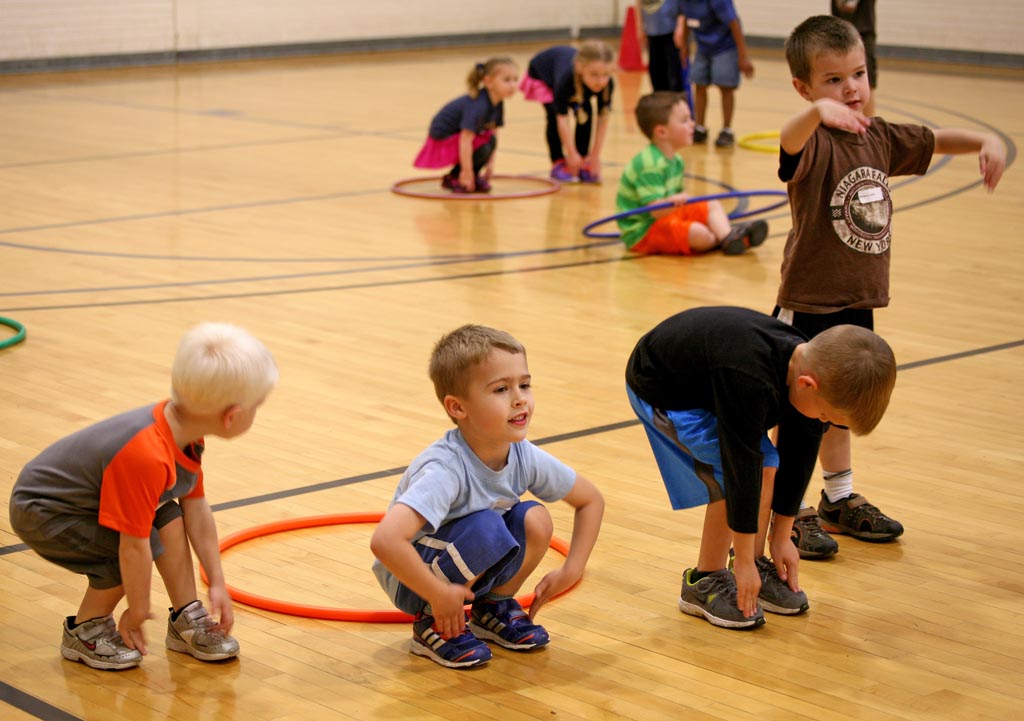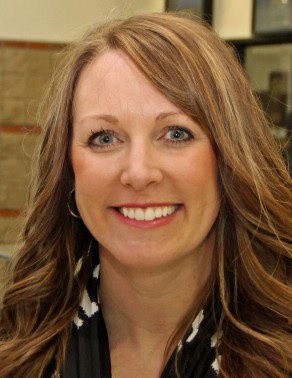
By SARA GIBONEY
UNK Communications
KEARNEY – Nearly 100 home school students visited the University of Nebraska at Kearney every Friday this school year for physical education.
“It’s a great opportunity for both our students and the local home school students because they don’t have high quality physical education in their curriculum. It’s a great opportunity to teach them lifetime skills,” said Patrick Mattfeld, physical education graduate student.
 Home school physical education classes took place once a week in Cushing Coliseum. Students were divided into groups based on their age: 4-6 year olds, 7-9 year olds, 10 years and older.
Home school physical education classes took place once a week in Cushing Coliseum. Students were divided into groups based on their age: 4-6 year olds, 7-9 year olds, 10 years and older.
Faculty from the Kinesiology and Sport Sciences Department created the curriculum, and 40 undergraduate students studying physical education created lesson plans and taught the classes each week.
“Physical education students are practicing their teaching, but we’re also providing a service to the home school population by offering a higher quality physical education program,” said Megan Adkins, associate professor of kinesiology and sport sciences.
Trisha Rinke of Kearney, who home schools her 11-year old daughter Autumn, said the program is important for Autumn’s development and helps her learn that exercise is fun.
“Our physical education curriculum isn’t very extensive. It discusses health, but there aren’t physical activities. We’re also limited. I only have one student, so we can’t play team sports or games,” Rinke said.
The physical education classes allow home school students to spend time with other children their age.
“The socialization is great. She gets to spend time with kids that are her age and that’s wonderful. She looks forward to it every week and counts down the days until Friday. She’s sad that it will be over for the summer,” Rinke said. “Normally she’s not eager to start school in the fall, so I know she’ll be eager to start school so she can come back to PE. It gives her something to look forward to.”
The program will continue in the fall of 2016.

Parents of home school kids also get an opportunity to connect with one another.
“When you home school, sometimes you feel isolated. It’s nice seeing other people who do the same thing you do. You’re not alone,” Rinke said.
Mattfeld said the track is open for parents to walk or run laps while their child is in class.
“The PE classes are three-fold,” Adkins said. “We’re offering a service to the community, we’re providing real life experience for our students and we’re conducting research.”
According to research, Adkins said, academic achievement of home school kids is higher than public school students, but there’s no research on the physical activity or fundamental movement patterns of the home school population.
She is researching whether home school students are as physically active as public school students and whether home school students know the components of lifetime fitness.
Adkins has been testing the proficiency of fundamental movement patterns of 4- to 8-year-old home school students. If the students had a deficiency at the beginning of the school year, she’s working to find out if the students movement patterns improved after a year of physical education classes.
-30-
Source: Megan Adkins, 308.865.8727, adkinsmm@unk.edu
Writer: Sara Giboney, 308.865.8529, giboneys2@unk.edu

